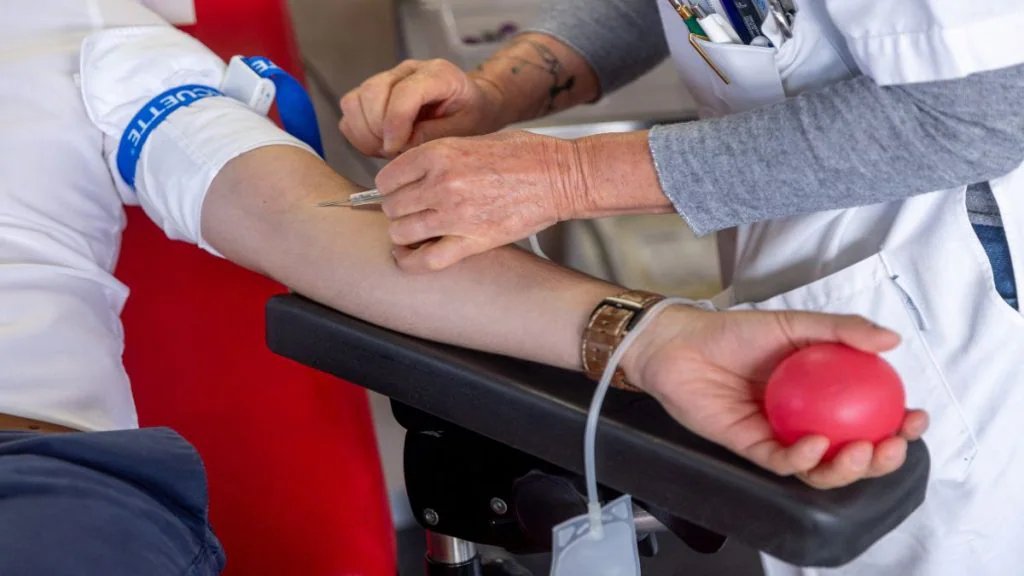Blood donation is a vital component of modern healthcare, enabling hospitals and medical professionals to perform life-saving procedures and manage severe medical conditions. However, the demand for blood often surpasses supply, leaving many patients vulnerable, particularly in emergency situations. In response to this growing crisis, mega blood donation drives have emerged as transformative initiatives, addressing shortages while fostering a culture of humanitarian service. These large-scale efforts are revolutionizing healthcare systems and strengthening the foundation of public health across the world.
The Growing Need for Blood Donation
Blood is a critical medical resource used for a wide range of procedures, including surgeries, trauma care, cancer treatments, and chronic disease management. According to the World Health Organization (WHO), blood transfusions save millions of lives each year, yet many countries, including India, struggle to maintain an adequate supply. The situation is even more dire in low-income nations, where insufficient blood reserves contribute to high mortality rates, especially among mothers, newborns, and accident victims.
Despite technological advancements in medicine, there is no artificial substitute for human blood, making voluntary donations indispensable. A single unit of blood can save up to three lives, yet many hospitals frequently report shortages, particularly for rare blood types. This underscores the importance of consistent and large-scale donation initiatives.
The Impact of Mega Blood Donation Drives
Mega blood donation drives have played a transformative role in addressing this challenge. These large-scale campaigns, often organized by hospitals, NGOs, corporate organizations, and government agencies, bring together thousands of voluntary donors to contribute towards building a sustainable blood supply.
Some of the key benefits of these drives include:
1. Bridging the Gap Between Demand and Supply
Regular blood donation drives ensure that hospitals maintain an adequate supply of blood, reducing the risk of shortages during medical emergencies. This is particularly crucial for patients undergoing surgeries, those receiving cancer treatments, and victims of accidents or natural disasters who require immediate transfusions.
2. Encouraging Voluntary and Regular Donations
Mega blood donation drives create awareness about the importance of regular blood donation. In many parts of the world, people donate only during emergencies, leading to inconsistent blood supplies. These drives help cultivate a habit of voluntary and frequent donations, ensuring long-term sustainability.
3. Strengthening Community Engagement and Social Responsibility
Blood donation is an act of selflessness that brings communities together. Mega drives promote a spirit of unity and compassion, encouraging individuals to contribute to a cause greater than themselves. Schools, colleges, workplaces, and religious institutions often collaborate on these initiatives, fostering a culture of social responsibility.
4. Ensuring Safe and Quality Blood Collection
Modern blood donation campaigns emphasize the need for safe blood collection and transfusion practices. WHO guidelines and national health policies require strict screening protocols to prevent the transmission of infections such as HIV, hepatitis, and syphilis. Large-scale donation events follow these standards, ensuring that only healthy donors contribute and that all donated blood is properly tested.
5. Boosting Public Health Awareness
These drives are not just about collecting blood; they serve as platforms for educating the public on health-related issues, including anemia, diabetes, and hypertension. Many organizations also conduct free health check-ups alongside blood donation drives, encouraging individuals to take charge of their well-being.
Success Stories from Around the World
Several nations have successfully used mega blood donation drives to enhance their healthcare systems.
1. India’s Record-Breaking Blood Donation Campaigns
India has witnessed some of the world’s largest blood donation drives. Organizations such as the Indian Red Cross Society, Rotary International, and hospitals like AIIMS regularly conduct mass donation events. In 2022, a single-day blood donation drive in India collected over 100,000 units of blood, setting a world record. Such initiatives are crucial in a country where demand is high due to a large population and frequent medical emergencies.
2. The United States and Its Community-Driven Blood Drives
In the United States, non-profit organizations like the American Red Cross organize nationwide blood donation drives, ensuring hospitals always have a steady supply. Public awareness campaigns encourage young people to become lifelong donors, helping sustain reserves in times of crisis.
3. China’s Push for Voluntary Blood Donations
China has made significant strides in promoting voluntary blood donations through educational campaigns and incentives. The country has seen an increase in repeat donors, strengthening its healthcare infrastructure and ensuring that blood is available for those in need.
4. The Role of UAE and Gulf Nations
In the UAE, authorities have launched digital platforms and mobile blood donation units to make it more convenient for residents to donate. The integration of technology has boosted participation, ensuring a continuous blood supply for both citizens and expatriates.
Challenges and the Way Forward
While mega blood donation drives have significantly improved the availability of blood, challenges remain.
1. Myths and Misconceptions
Many potential donors hesitate to donate blood due to myths, such as the belief that it weakens the body or leads to long-term health issues. Public awareness campaigns must address these concerns with scientific facts, reassuring people that blood donation is safe and beneficial.
2. Need for More Consistent Donations
Although mega drives collect large amounts of blood in a short time, the demand for blood is continuous. Encouraging donors to give blood regularly rather than just during large events is crucial for maintaining an uninterrupted supply.
3. Storage and Distribution Challenges
Blood has a limited shelf life, with red blood cells lasting up to 42 days and platelets only five days. Efficient storage facilities and logistics are essential to prevent wastage and ensure that blood reaches those who need it most.
4. Encouraging Rare Blood Type Donations
Some blood types, such as O-negative (the universal donor) and AB-negative, are rare but highly needed. Campaigns should focus on reaching individuals with these blood types and encouraging them to donate regularly.
Technology’s Role in Blood Donation
Technology has revolutionized the way blood donation drives operate. Mobile apps and online platforms now allow individuals to find nearby blood donation centers, track their donation history, and receive reminders for their next eligible donation date.
Some of the latest innovations include:
- AI-Based Matching Systems: These help connect donors with specific blood groups to patients in urgent need.
- Drones for Blood Delivery: Some countries are experimenting with drone technology to transport blood quickly to remote or disaster-hit areas.
- Blockchain for Donor Data Management: Secure databases ensure transparency in tracking blood donations and transfusions.
A Call to Action: Everyone Can Make a Difference
Blood donation is one of the most selfless acts a person can perform. Every donor contributes to a life-saving network that benefits accident victims, cancer patients, individuals undergoing surgeries, and those with chronic illnesses.
If more people commit to donating blood regularly, the global health system can overcome shortages, ensuring that no patient dies due to the unavailability of blood. Governments, healthcare organizations, and community leaders must continue promoting mega blood donation drives, ensuring they become a sustainable part of public health efforts.
Mega blood donation drives have already made a remarkable impact on global healthcare, saving countless lives and fostering a sense of unity. However, the journey does not end here. With increased participation, better awareness, and continued innovation, blood donation drives can further revolutionize healthcare, ensuring that life-saving blood is always available when needed.
By donating blood, you are not just giving a part of yourself—you are giving someone a second chance at life.























